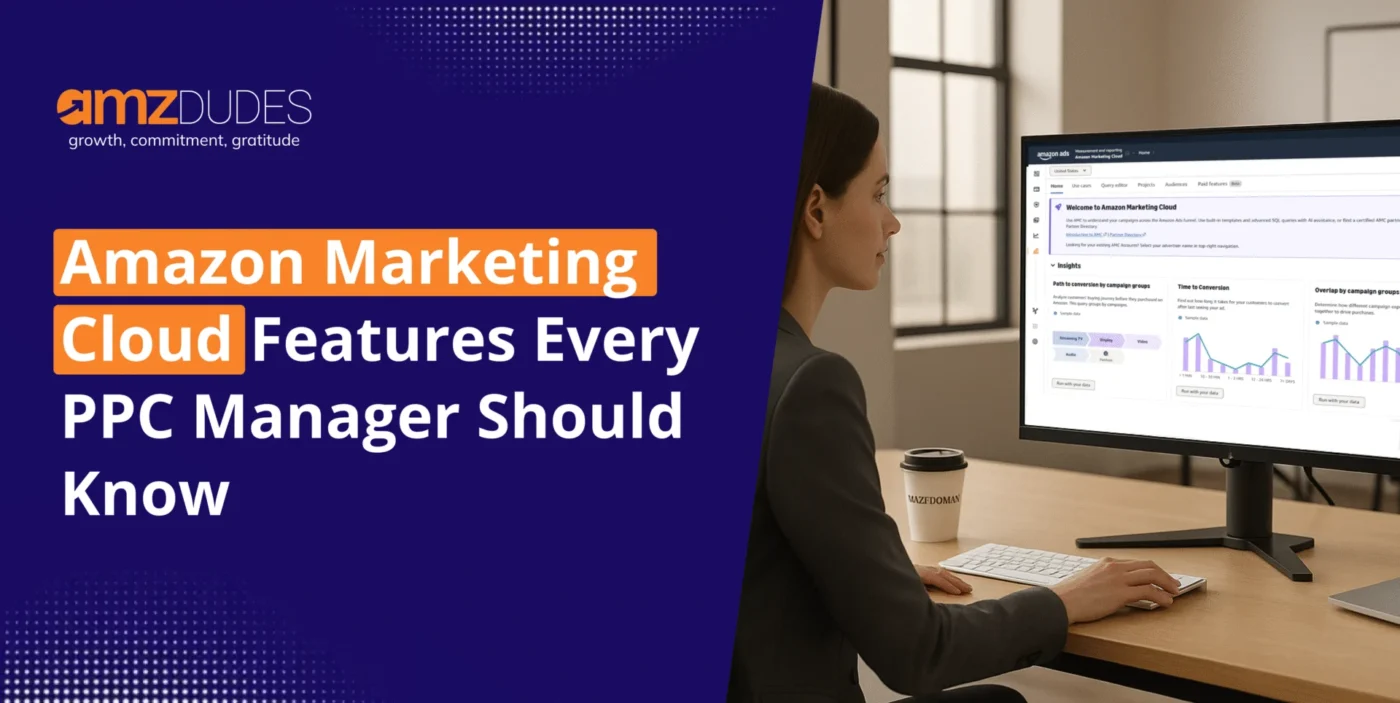Key Takeaways
- AMC is a layered system where core features such as data integration and analytics provide the base, while advanced functions like audience building and cross-channel insights build on top of them.
- Analytics is the engine of AMC, turning ad signals into aggregated insights that feed measurement, queries, and targeting, always at the group level rather than individual shoppers.
- Privacy rules guide every output. Minimum thresholds, filter suppression, and aggregated reporting protect shopper identity but also limit how specific analyses can become.
- Custom queries give PPC managers flexibility to examine sequencing, measure incremental lift, and study ROI across the funnel, providing a deeper view than surface dashboards.
- AMC delivers long-term strategic value. It is designed for planning and discovery such as understanding ad sequences, budget efficiency, and channel interactions rather than day-to-day bid changes.
Any seasoned PPC manager knows that surface-level reports only go so far. Impressions, clicks, and conversion percentages give you a snapshot, but they rarely tell the full story. If you’re trying to understand how different ad formats work together, what happens in the days before a customer finally converts, or how your budget performs across channels, the usual dashboards feel shallow.
That’s where Amazon Marketing Cloud (AMC) comes in. Think of it as a privacy-safe analytics clean room: a protected environment where you can join Amazon’s vast advertising signals with your own data and then run structured queries to uncover deeper truths.
This blog is all about Amazon Marketing Cloud features, their practical examples, limitations and trade-offs.
8 Amazon Marketing Cloud Features
Before getting into each capability, it’s important to understand that these features do not operate in isolation. Amazon Marketing Cloud is designed as a connected system where some functions serve as the foundation and others build on top of them. What follows is a closer look at the eight key features every PPC manager should know, along with the dependencies, benefits, and limitations that define how they work in practice.
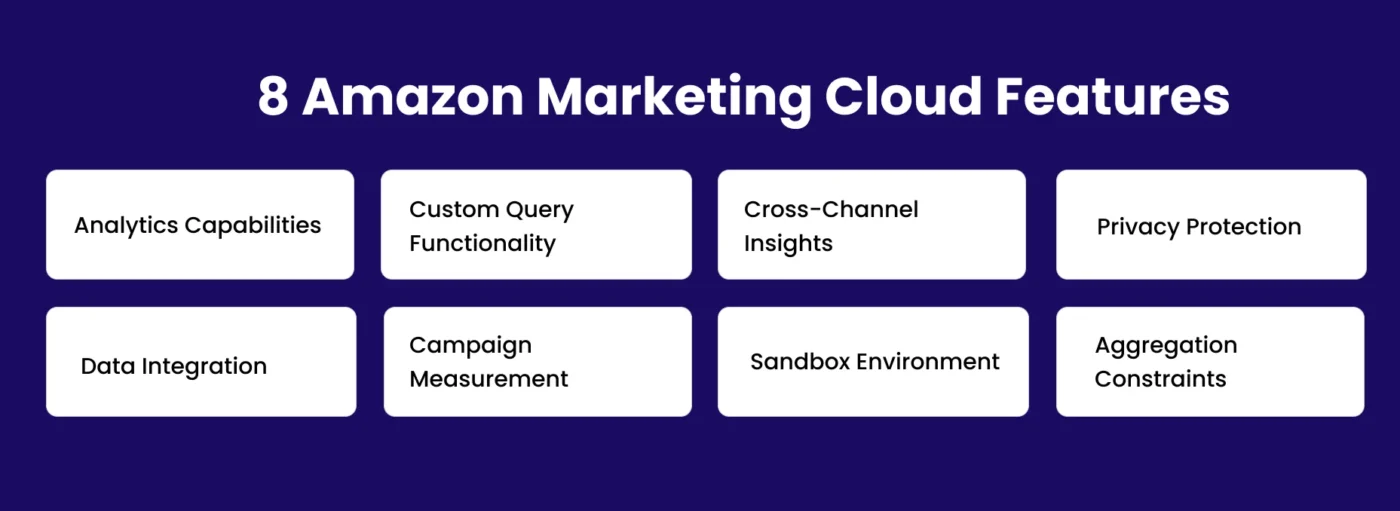
1. Analytics Capabilities
Analytics is often described as the cornerstone of Amazon Marketing Cloud, and for good reason. It is the core feature that powers almost everything else inside AMC. Audience creation, campaign measurement, cross-channel analysis, and even custom audience building all rely on the insights that analytics produces. In simple terms, analytics takes enormous amounts of ad signals and turns them into structured results that a PPC manager can actually interpret and apply.
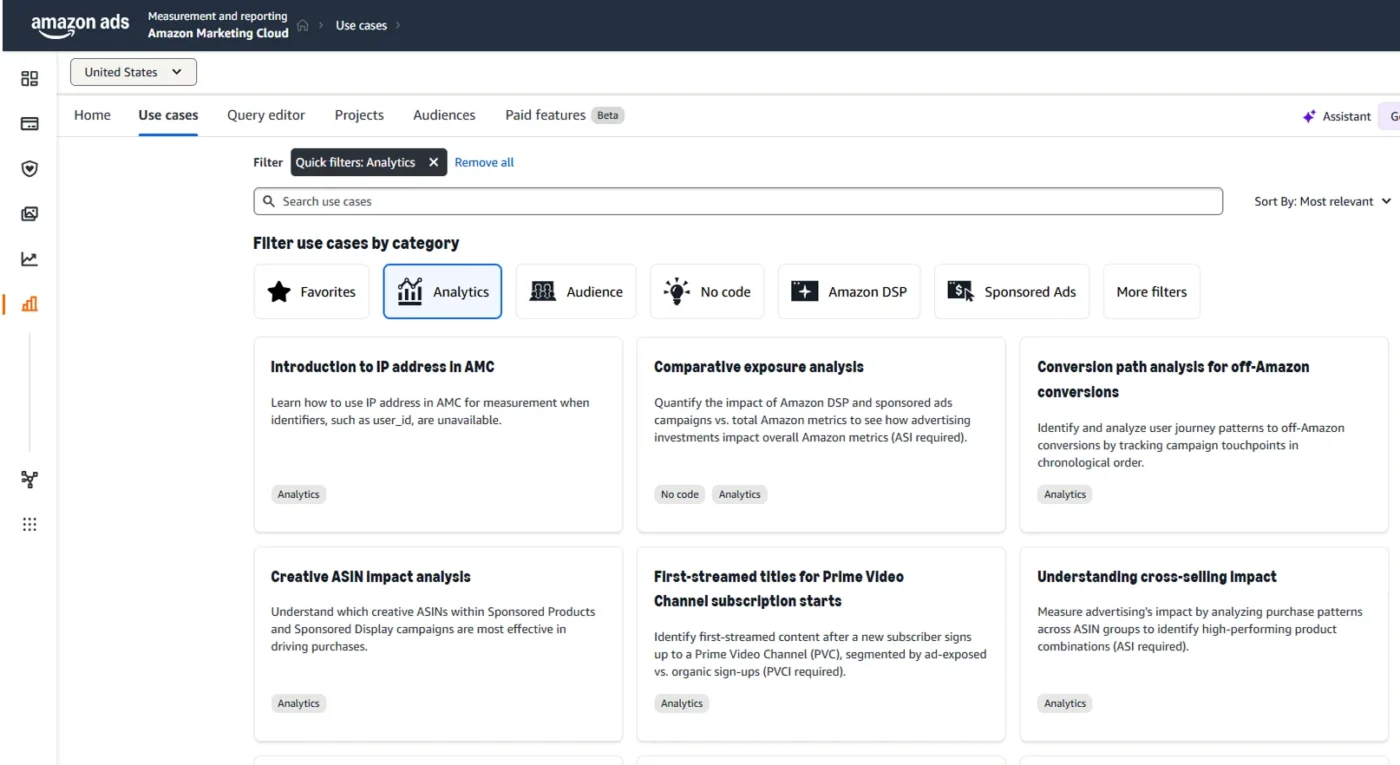
The real strength of AMC’s analytics lies in its ability to process pseudonymized signals such as impressions, clicks, and conversions and return them as aggregated outputs. Unlike surface-level reports that show isolated clicks or conversion counts, AMC allows you to see the larger picture and how different signals relate to one another.
The catch is that you will never see individual shopper paths. What you are working with is collective behavior, rolled up in a way that both protects privacy and reveals patterns that ordinary dashboards can never reveal.
Clean data integration is the foundation here. Without strong integration between Amazon’s advertising signals and your own first-party data, the analytics layer runs blind. When the integration is done correctly, however, analytics becomes a powerful lens.
You can map out sequences, identify trends across campaigns, and learn how different types of ads interact with each other in the buying journey. This depth is what separates AMC from standard reporting tools and makes it so valuable to PPC managers who want more than just surface metrics.
Example
Imagine you want to understand how different ad formats appear in the sequence leading up to a purchase. Standard dashboards might show you that Sponsored Brands generated a certain number of clicks and conversions, while DSP display ads delivered another set of results. What they will not show you is the order in which these ads appeared.
AMC analytics can reveal that a Sponsored Brands placement often happens earlier in the journey, creating initial awareness, while a DSP display ad tends to show up later, nudging the shopper closer to the final conversion. This type of sequencing insight is critical when deciding how to allocate spend across the funnel.
Limitations
- Privacy thresholds ensure results only appear once a minimum sample size is reached. Narrow segments may be suppressed entirely.
- Outputs are always aggregated, meaning you will never see individual customer journeys.
- Data typically updates with a 24–48 hour delay, so AMC is not suitable for real-time optimization.
2. Data Integration
If analytics is the cornerstone of Amazon Marketing Cloud, then data integration is the Amazon Marketing Cloud’s feature that keeps it running. Without proper inputs, the entire system struggles to deliver meaningful insights.
But what basically integration is? It is the process of connecting Amazon Ads signals such as impressions, clicks, and conversions with your own data sources, which may include CRM activity, email engagement, loyalty program interactions, or even offline purchase records.

This step matters because Amazon’s ecosystem, powerful as it is, only captures part of the customer journey. If you rely solely on native signals, you will understand how ads are performing on Amazon, but you will miss what happens before or after.
By layering in your own data, you extend the scope of analysis and build a much richer view of the customer lifecycle. A CRM upload, for example, might reveal which ad impressions led to long-term repeat buyers rather than one-time purchasers. Offline conversions might show how your Amazon advertising is influencing in-store purchases. When integration is clean and accurate, the value of AMC multiplies dramatically.
Challenges
The process of joining your own data with Amazon’s pseudonymized signals is far from straightforward. There are several hurdles every PPC manager should anticipate:
- Pseudonymized IDs: Amazon anonymizes shopper data, which means your customer identifiers cannot simply be matched one-to-one. Bridging these gaps requires careful mapping and sometimes advanced data engineering.
- Data hygiene issues: Missing fields, formatting inconsistencies, or timestamp mismatches can derail entire datasets. Even small errors can snowball into misleading analytics.
- Latency: most signals do not appear in real time. Expect a delay of twenty-four to forty-eight hours before integrated data reflects in AMC. For marketers accustomed to immediate reporting, this requires a mindset shift toward longer-term analysis.
3. Custom Query Functionality
For PPC managers who want to go beyond canned reports, custom queries are where Amazon Marketing Cloud truly shines. This is the playground for power users. Instead of relying on pre-set dashboards or templates, AMC provides a SQL-based environment where you can ask your own questions, explore data from fresh angles, and create outputs tailored to your brand’s priorities.

The power of custom queries rests on the features that come before it. Without clean data integration and a reliable analytics base, queries will return either incomplete or misleading results. But when those foundations are in place, the query environment becomes one of the most versatile tools for a PPC manager. It allows you to slice, dice, and cross-tabulate performance however you need and offer the kind of precision and flexibility that standard reporting cannot match.
Strengths and Limitations of Custom Queries
| Strengths | Limitations |
| Flexibility: custom queries free you from the rigid structure of dashboards. If you have a unique business question, you can design a query that explores it directly. | SQL knowledge is essential: the environment is not drag-and-drop. Non-technical PPC managers may need help from analysts or engineers to craft more complex queries. |
| Precision: you can narrow your analysis to a specific audience segment, time period, or channel mix rather than relying on broad, one-size-fits-all reports. | System performance: highly complex joins or extremely granular filters can cause queries to time out or fail to return results. |
| Creativity: the query environment encourages experimentation. You can design queries that reflect your brand’s exact KPIs, such as time-to-conversion, frequency caps, or audience overlap. | Privacy aggregation rules: AMC will not return outputs if the segment size is too small. For example, querying “cart abandoners in New York last Tuesday” may be suppressed entirely if the sample does not meet the minimum threshold. |
Example
Consider a PPC manager trying to understand how many touchpoints a new-to-brand customer requires before finally converting. A custom query might show that most NTB customers interact with three or four different ad types before purchase, with DSP video often driving early awareness and Sponsored Products playing the closer role. Insights like this are gold when planning budget allocation because they reveal which channels matter most at each stage of the funnel.
The key is ensuring your sample size is large enough to clear AMC’s privacy rules. When the numbers are too small, the system suppresses the output to protect anonymity. But when queries are properly scoped, they offer a level of clarity and strategic guidance that no surface-level report can match.
4. Campaign Measurement
Once queries are in place, PPC managers can move beyond surface-level metrics and evaluate how campaigns perform at a deeper level. Campaign measurement in AMC is about connecting the dots that standard dashboards often miss. Instead of simply comparing clicks to conversions, you gain visibility into sequences of actions, diminishing returns at higher spend levels, and the relative strength of different placements across the funnel.
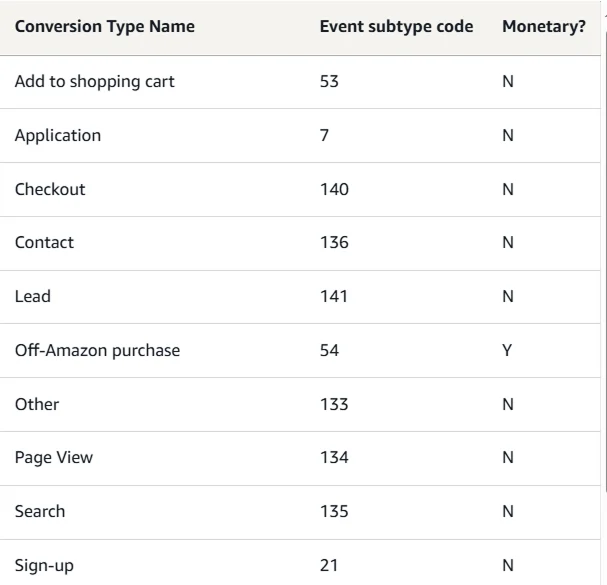
This feature depends directly on the outputs of analytics and custom queries. The more solid your base data and query design, the more accurate and actionable your measurement results will be. At its best, AMC campaign measurement gives managers the tools to understand return on investment, optimize supply paths, study the sequence of ads leading to a conversion, and refine budgets in ways that standard reports cannot replicate.
Why it matters
- The traditional model of reporting focused only on clicks versus conversions, which is too limited for today’s Amazon landscape.
- AMC campaign measurement shows how ads work together over time, not just in isolation.
- It helps quantify the lift you get from different placements across the funnel.
- It identifies the point where additional spend delivers diminishing returns, guiding smarter budget allocation.
- It highlights underperforming segments before they waste too much budget.
- These insights move reporting beyond surface numbers and allow PPC managers to shape strategy with brand-specific evidence.
Limitations
- Campaign measurement inherits the same privacy thresholds that apply to analytics and queries. Narrow filters or very specific audience segments may result in suppressed results.
- The complexity of queries required for sequencing or incremental analysis can be high, often demanding technical resources.
- Latency remains a factor, since AMC data typically updates with a delay of twenty-four to forty-eight hours. This makes campaign measurement a strategic tool rather than a real-time optimization engine.
Trade-off
The deeper you go with AMC measurement, the more complexity you will encounter. Complex queries consume time and may require support from analysts or engineers. Yet the trade-off is worth it. The insights you gain from AMC such as sequences, incremental lift, and placement-level ROI are not accessible through standard Amazon dashboards. For PPC managers competing in crowded marketplaces, those insights represent an edge competitors without AMC cannot match.
5. Cross-Channel Insights
Cross-channel insights are where Amazon Marketing Cloud stops being just a reporting tool and starts becoming a true strategic engine. For most PPC managers, one of the biggest blind spots is understanding how different ad formats interact across the funnel. You might know that Sponsored Products are driving conversions and DSP ads are creating impressions, but without AMC you cannot see how the two interact or which order of exposure matters most.
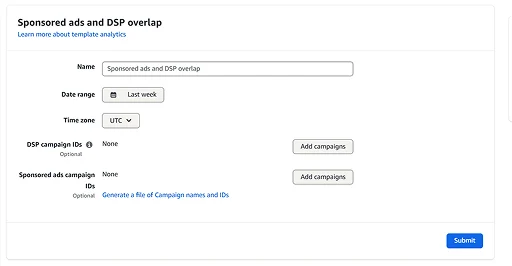
AMC fills that gap by showing how channels such as DSP, Sponsored Brands, Sponsored Products, video, and even audio advertising combine to influence customer behavior. This is critical because shoppers rarely convert after a single touch.
They may watch a video ad, click a Sponsored Brand placement, ignore a DSP display the first time, and then finally purchase after a Sponsored Product ad. Traditional reports treat each of these as isolated actions. AMC connects them, quantifying the overlap and showing how one ad type primes the effectiveness of another.
The dependency here is significant. Cross-channel insights rely on analytics as the foundation, custom queries to frame the right measurement questions, and data integration to ensure signals from all relevant channels are available. Without all three working together, the picture remains incomplete.
Limitations
- Some channels do not always generate enough overlap to provide statistically valid analysis. Results may be incomplete if volumes are too low.
- Privacy thresholds apply. If your filters are too narrow, AMC will suppress the output to protect shopper anonymity.
- Latency between channels can vary. DSP data may update at a different pace than Sponsored Products or Sponsored Brands, which makes precise alignment across all channels challenging.
6. Custom Audience Building
One of the most practical outcomes of using Amazon Marketing Cloud is the ability to build and activate custom audiences. For many PPC managers, this is where AMC shifts from being a purely analytical environment into a tool that directly impacts campaign performance. Instead of only analyzing how ads perform, you can take those insights, translate them into audience definitions, and then push those segments into your DSP campaigns for more effective targeting.
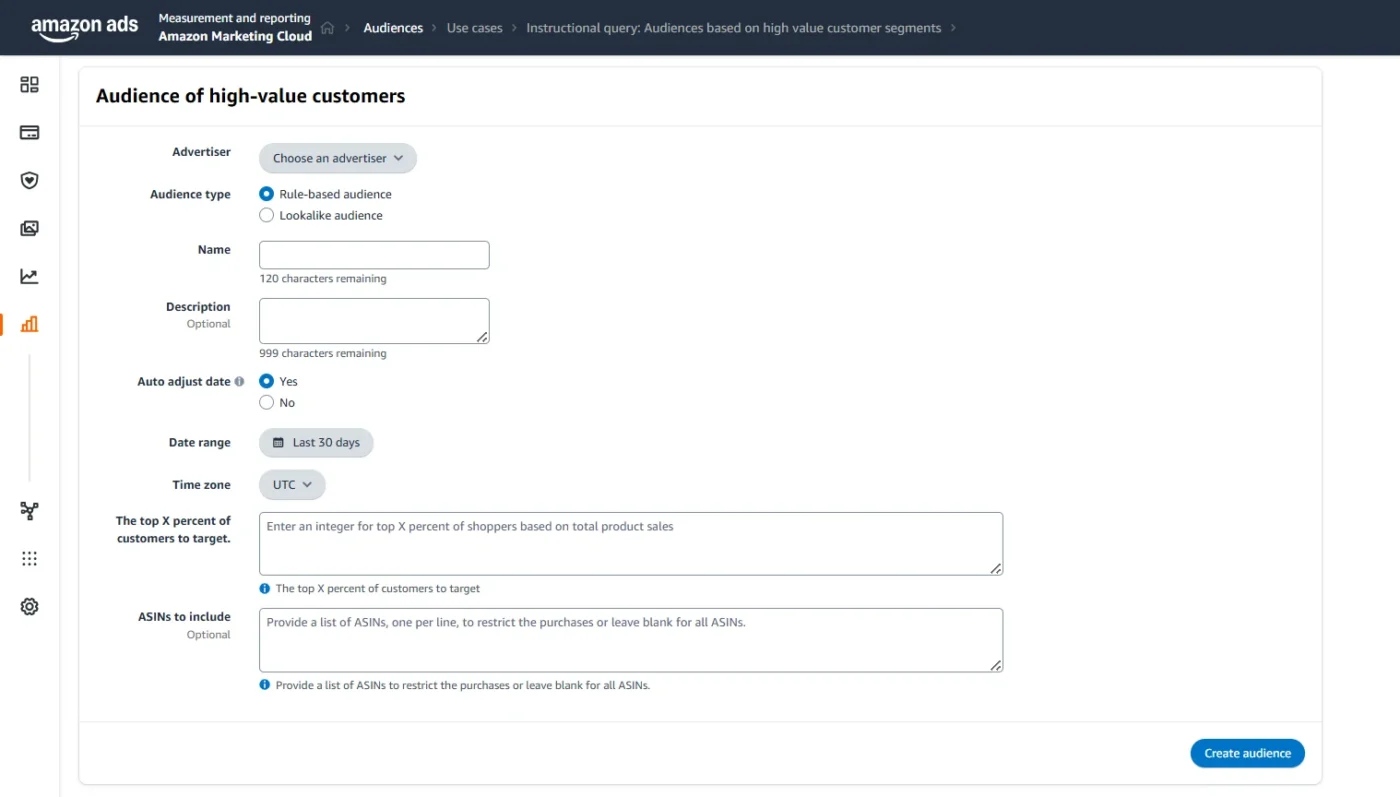
Custom audiences in AMC are not arbitrary lists. They are segments defined by real behavioral signals drawn from your data integration and analytics layers. With clean inputs and solid queries, you can generate highly valuable audience groups such as new-to-brand customers, repeat buyers with high lifetime value, or shoppers who abandoned their cart before completing checkout. These segments reflect actual customer behavior, which makes them far more powerful than broad demographic or interest-based targeting.
The dependency here is critical. Audience building requires strong data integration to bring in all relevant signals and reliable analytics outputs to identify the patterns worth segmenting. Without those foundations, the audiences you create will either be incomplete or too generic to deliver meaningful results. But with them in place, you gain the ability to align your ad spend directly with the audiences most likely to drive growth.
How it works
The process starts with designing a query in AMC that defines your target group—for example, shoppers who clicked on Sponsored Products twice in the last 30 days but have not converted. Once the query produces the aggregated output and passes the privacy thresholds, you can export that segment to Amazon DSP and use it as a targeting audience. From there, you can retarget those shoppers with tailored creative or build lookalike models to expand your reach to similar high-value users.
Benefits
- More precise retargeting that follows actual shopper behavior rather than generic assumptions.
- Ability to create high-value lookalikes based on your strongest customer segments.
- Alignment of ad spend with real behavioral insights, which improves efficiency and ROI.
Constraints
- Audiences must meet minimum size requirements before they can be activated. If your query is too narrow, AMC will block the audience to protect shopper privacy.
- Audience building is not instantaneous. Once defined, it can take time for the segment to populate and become available for activation in DSP.
7. Sandbox Environment
The sandbox is Amazon Marketing Cloud’s safe playground, and while it may not sound as exciting as features like analytics or custom queries, it plays a vital role in helping teams build confidence and sharpen their skills. Think of it as a training ground where you can experiment freely without the risk of impacting live campaign data. For PPC managers, analysts, or anyone new to AMC, the sandbox offers a space to practice, make mistakes, and explore possibilities before moving into production.

The purpose of the sandbox is straightforward: it allows users to write queries, test new approaches, train staff, and explore features in an environment that mirrors the structure of AMC’s live system. The schema is the same, which means that the skills and techniques you develop in the sandbox transfer directly to production. This continuity is important because it allows teams to experiment with real AMC query logic in a safe environment, reducing the learning curve and avoiding costly errors.
One of the most valuable uses of the sandbox is for query prototyping. For example, if you are trying to design a complex query to study path-to-conversion patterns or cross-channel frequency, the sandbox lets you build and test the structure without worrying about timeouts, costs, or performance issues in the live instance.
Once the query logic is solid, you can move it into production with confidence. It also serves as a training ground for new staff. Instead of handing them direct access to production AMC which could lead to errors that waste resources, you can give them access to the sandbox, where they can learn at their own pace.
8. Privacy Protection & Aggregation Constraints
Privacy protection is the invisible hand guiding every feature inside Amazon Marketing Cloud. While analytics, queries, and custom audiences might feel like the headline features, they all operate under a strict set of rules designed to protect shopper anonymity. These rules are not optional or adjustable; they are baked into the foundation of AMC and apply universally, whether you are building queries, measuring campaigns, or creating audiences.
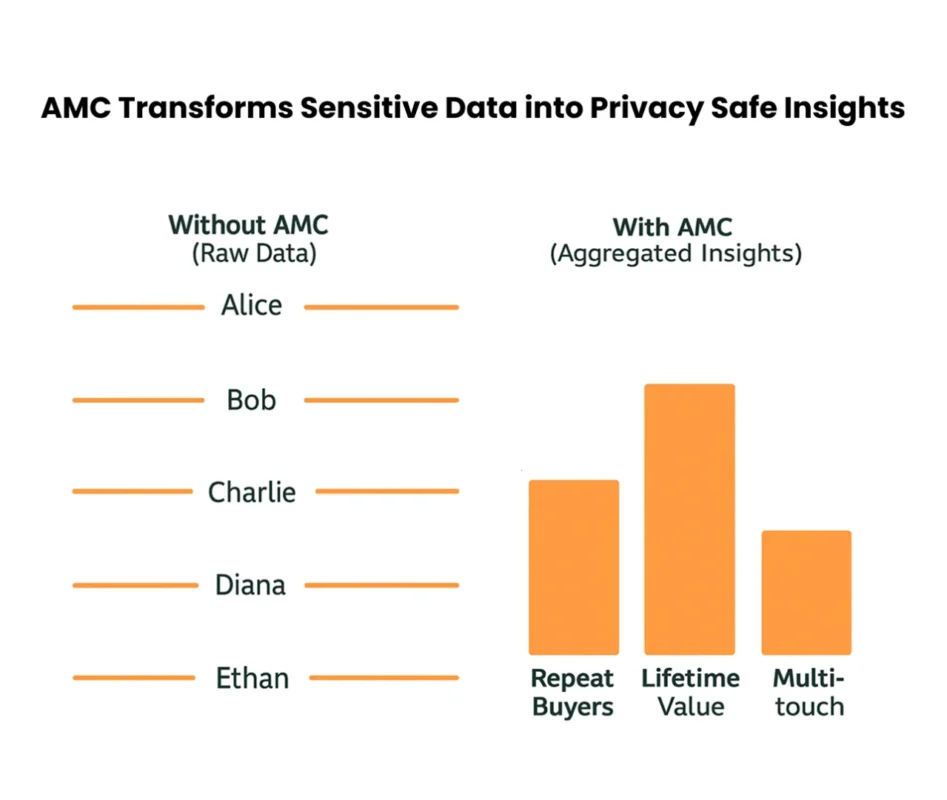
At its core, AMC ensures that all outputs are both pseudonymized and aggregated. This means you will never have access to raw user-level data. Instead, the system allows you to see patterns and group behavior, but never the identity of individual shoppers.
For PPC managers used to platforms that allow narrower targeting or direct audience matching, this can feel like a constraint. Yet it is precisely this design that allows AMC to exist as a privacy-safe clean room while still offering advertisers meaningful insights.
How it works
Privacy protection and aggregation rules are enforced in several key ways:
- Minimum thresholds: Queries must pull from a large enough population before results can be displayed. If the sample size is too small, AMC suppresses the output entirely.
- Suppression of narrow filters: If you attempt to run a query with overly specific criteria, such as “cart abandoners in one city over a single day,” the results may never appear. The system is built to block these outputs to prevent re-identification.
- Aggregation by default: All results are rolled up into group-level statistics. Instead of seeing individual shopper journeys, you see metrics that describe the collective behavior of segments that pass the privacy thresholds.
Best practices
Working within these constraints requires a shift in approach. Instead of fighting the rules, the smartest PPC managers adapt their strategies to work with them. Some proven practices include:
- Widening date ranges to increase the sample size and ensure that queries clear the minimum thresholds.
- Avoiding over-segmentation when defining audiences or filters. Broader segments often return richer, more reliable insights than extremely narrow ones.
- Running incremental queries rather than trying to answer every question with one ultra-specific query. Breaking analyses into steps makes it easier to stay within the privacy framework while still building toward detailed insight.
Limitations, Trade-offs & Feature Interactions
At this point, it’s worth stepping back and reviewing the patterns that run through nearly every AMC feature. Each capability, from analytics to audience building, delivers powerful opportunities, but each also carries constraints that PPC managers must understand in order to avoid frustration and wasted effort.
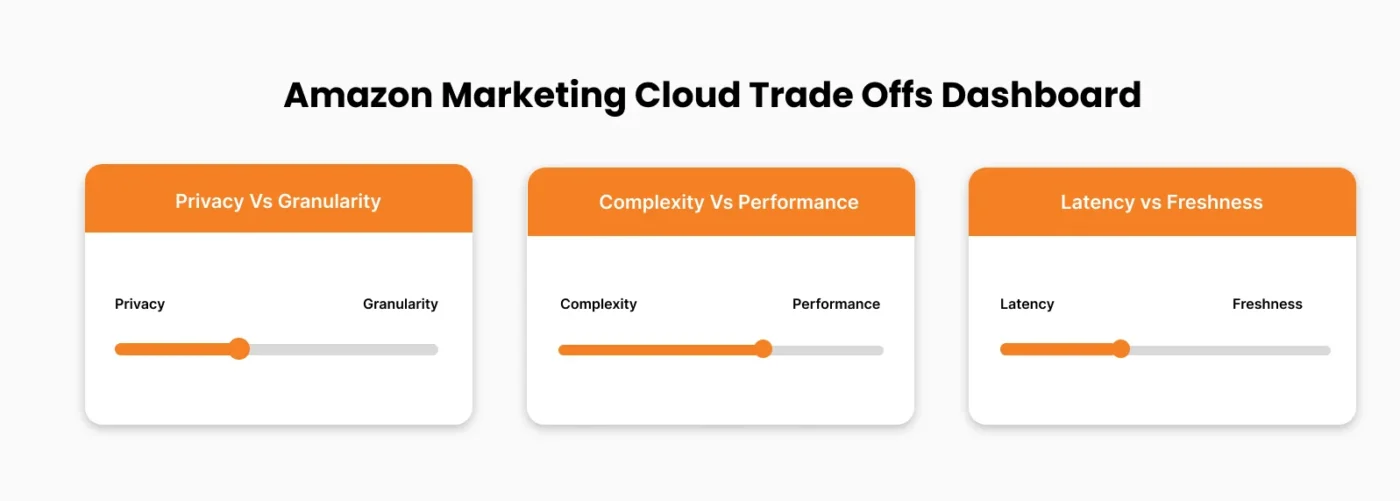
1. Privacy vs Granularity:
AMC is built to protect shopper anonymity, and that comes with strict rules. The tighter your filters or the smaller your audience definition, the higher the chance that results will be suppressed. This forces you to think in terms of larger groups and broader timeframes. While that might feel limiting at first, it actually helps you focus on statistically meaningful insights rather than chasing hyper-specific cases.
2. Complexity vs Performance:
Detailed queries can bring incredible insights, but they put pressure on the system and increase the likelihood of errors or timeouts. It is tempting to design one massive query that tries to answer every question at once, but in practice, smaller, incremental queries usually deliver cleaner results. The key is finding the balance between ambition and practicality.
3. Latency vs Freshness:
AMC data is not real-time. Most signals arrive with a 24 to 48-hour delay, and sometimes longer depending on the channel. That means you cannot use AMC to make daily bid changes or reactive adjustments on the fly. Instead, it should be treated as a strategic tool for identifying patterns and shaping campaigns over weeks and months, not as a tactical dashboard for day-to-day optimization.
Conclusion
Amazon Marketing Cloud is not a plug-and-play tool but a layered system where foundational features support advanced capabilities and every output is shaped by privacy rules. PPC managers should start with core analytics and simple queries, integrate first-party data, and use the sandbox to build confidence.
From there, campaign measurement, audience building, and cross-channel insights can be added to form a complete picture of performance. Above all, AMC is a tool of discovery that can turn your Amazon PPC from reactive adjustments to proactive, data-driven planning while respecting shopper privacy.
FAQs
1. What is Amazon Marketing Cloud (AMC)?
AMC is a privacy-safe analytics tool that lets advertisers combine Amazon Ads data with their own to gain deeper performance insights.
2. How is AMC different from standard Amazon Ads reports?
Unlike basic dashboards, AMC shows ad sequences, audience behavior, and cross-channel interactions rather than just clicks and conversions.
3. Does AMC provide real-time data?
No. Most data has a 24 to 48-hour delay, making AMC a tool for strategic planning, not daily bid adjustments.
4. Do I need technical skills to use AMC?
Yes, some SQL knowledge is required. Non-technical users may need analyst support, though templates can simplify the process.
5. How does AMC protect customer privacy?
All outputs are aggregated and pseudonymized, with thresholds and suppression rules in place to prevent individual identification.

